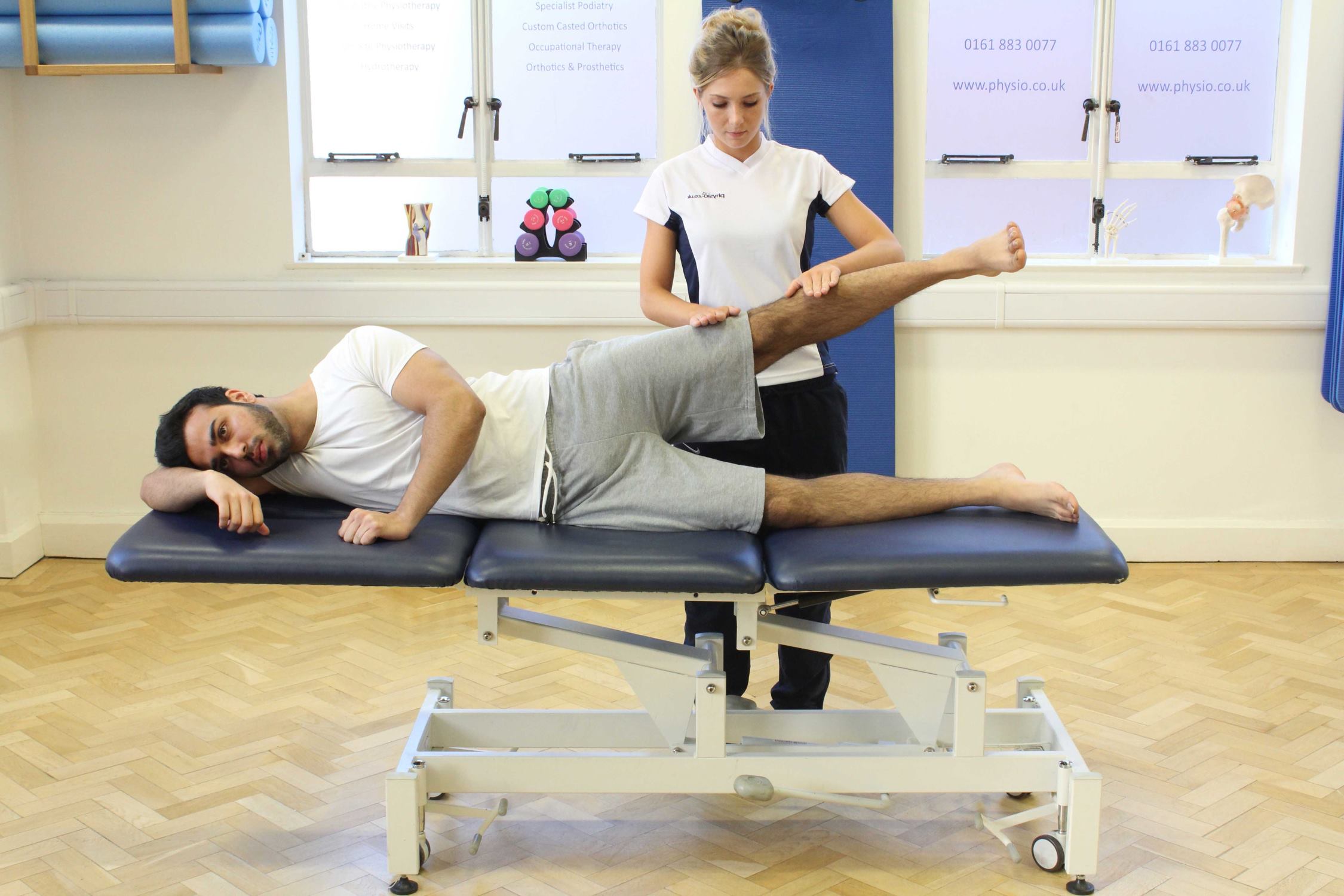Home>Health & Nutrition>A Comprehensive Guide To Understanding Resting Heart Rate For Runners


Health & Nutrition
A Comprehensive Guide To Understanding Resting Heart Rate For Runners
Published: February 21, 2024
Learn how resting heart rate impacts the health and nutrition of runners. Discover a comprehensive guide to understanding and optimizing your heart rate for peak performance.
(Many of the links in this article redirect to a specific reviewed product. Your purchase of these products through affiliate links helps to generate commission for Therunningadvisor.com, at no extra cost. Learn more)
Table of Contents
The Importance of Resting Heart Rate for Runners
Resting heart rate (RHR) serves as a crucial indicator of cardiovascular health and fitness for runners. It represents the number of times the heart beats per minute while the body is at complete rest. Understanding the significance of RHR empowers runners to optimize their training, monitor their progress, and prevent overtraining and potential health issues.
A lower resting heart rate typically signifies a more efficient cardiovascular system. As runners engage in regular aerobic exercise, their heart becomes stronger and more capable of pumping blood with each beat. Consequently, the heart doesn't need to work as hard at rest, leading to a lower RHR. This improvement in cardiovascular efficiency is a key goal for many runners, as it allows them to sustain higher exercise intensities while expending less effort.
Moreover, monitoring RHR can provide valuable insights into an individual's overall health and recovery status. Sudden increases in resting heart rate may indicate excessive fatigue, illness, or overtraining, prompting runners to adjust their training intensity or schedule to prevent potential injuries or setbacks. On the other hand, a consistently low RHR can serve as a positive indication of good cardiovascular health and effective recovery from workouts.
By understanding the importance of resting heart rate, runners can make informed decisions about their training regimens, adjust their exercise intensity, and take necessary steps to maintain their cardiovascular health. This knowledge empowers runners to optimize their performance, prevent injuries, and achieve their fitness goals effectively.
Factors Affecting Resting Heart Rate
Resting heart rate (RHR) is influenced by various factors, reflecting the complex interplay of physiological, environmental, and lifestyle elements. Understanding these factors is essential for runners seeking to optimize their cardiovascular health and performance. Here are the key determinants affecting resting heart rate:
1. Fitness Level:
The fitness level of an individual significantly impacts their resting heart rate. Regular aerobic exercise, such as running, leads to cardiovascular adaptations that result in a lower RHR. As the heart becomes more efficient at pumping blood, it doesn't need to work as hard at rest, leading to a decreased resting heart rate. Conversely, a sedentary lifestyle may contribute to a higher RHR due to reduced cardiovascular efficiency.
2. Age:
Age plays a crucial role in determining resting heart rate. Generally, younger individuals tend to have higher heart rates, while older individuals typically exhibit lower resting heart rates. This is primarily attributed to age-related changes in the cardiovascular system, including a decrease in maximum heart rate and changes in cardiac function.
3. Genetics:
Genetic factors can influence an individual's resting heart rate. Some people may inherently have lower or higher RHR due to genetic predispositions. While genetics play a role, it's important to note that lifestyle and environmental factors also significantly impact resting heart rate.
4. Stress and Anxiety:
Emotional and psychological factors, such as stress and anxiety, can elevate resting heart rate. When the body experiences stress, the sympathetic nervous system is activated, leading to an increase in heart rate. Chronic stress can contribute to sustained elevations in resting heart rate, potentially impacting cardiovascular health.
5. Temperature and Humidity:
Environmental conditions, including temperature and humidity, can affect resting heart rate. High temperatures and humidity can place additional stress on the cardiovascular system, leading to an increase in RHR as the body works to regulate its internal temperature.
6. Hydration Levels:
Dehydration can elevate resting heart rate as the body strives to maintain adequate blood circulation and oxygen delivery to tissues. Proper hydration is essential for maintaining a healthy resting heart rate, as dehydration can strain the cardiovascular system and lead to an elevated RHR.
7. Medications and Caffeine:
Certain medications and stimulants, such as caffeine, can impact resting heart rate. Stimulants may lead to temporary increases in heart rate, while certain medications may have long-term effects on cardiovascular function, potentially influencing RHR.
By recognizing the diverse factors that influence resting heart rate, runners can gain valuable insights into their cardiovascular health and make informed decisions to optimize their training and overall well-being. Understanding these influences empowers individuals to take proactive steps to maintain a healthy resting heart rate and enhance their running performance.
How to Measure Resting Heart Rate
Measuring resting heart rate (RHR) is a straightforward process that provides valuable insights into an individual's cardiovascular health and fitness level. There are several methods to accurately determine RHR, allowing runners to monitor their progress and make informed decisions about their training regimens. Here are the primary techniques for measuring resting heart rate:
1. Manual Pulse Measurement:
This traditional method involves locating the pulse and counting the number of beats over a specific duration, such as 60 seconds. The pulse can be found at various points on the body, including the wrist (radial artery), neck (carotid artery), or the chest. To ensure accuracy, it's essential to remain still and calm while taking the measurement. Manual pulse measurement provides a simple and cost-effective way to assess resting heart rate, requiring only a timer or watch with a second hand.
2. Heart Rate Monitors:
Utilizing a heart rate monitor offers a convenient and precise means of measuring RHR. These devices typically consist of a chest strap or wristwatch that detects the heart's electrical signals and displays the heart rate in real time. Many modern heart rate monitors also provide additional features, such as workout tracking and wireless connectivity to smartphones or fitness apps. By wearing a heart rate monitor during rest, runners can obtain accurate and instantaneous readings of their resting heart rate.
3. Fitness Trackers and Smartwatches:
Fitness-oriented wearable devices, including fitness trackers and smartwatches, often incorporate heart rate monitoring capabilities. These devices utilize optical sensors to detect blood flow and measure heart rate directly from the wrist. With the widespread availability of fitness trackers, individuals can conveniently track their resting heart rate throughout the day and gain insights into their overall cardiovascular health and recovery status.
Read more: Understanding And Managing Patellofemoral Pain Syndrome: A Comprehensive Guide For Runners
4. Mobile Applications:
Numerous mobile applications are designed to measure heart rate using the built-in cameras and sensors of smartphones. By placing a fingertip over the camera lens, these apps detect changes in skin color caused by blood flow, enabling the calculation of resting heart rate. While the accuracy of these apps may vary, they offer a convenient and accessible way to monitor RHR for individuals who prefer using their smartphones for health tracking.
5. Laboratory Testing:
For a comprehensive assessment of cardiovascular health, individuals can undergo laboratory testing to measure resting heart rate and other vital parameters. This may involve electrocardiography (ECG) or other specialized tests conducted by healthcare professionals to evaluate cardiac function and identify any underlying conditions affecting heart rate.
By employing these diverse methods, runners can accurately measure their resting heart rate and gain valuable insights into their cardiovascular health and fitness progress. Regular monitoring of RHR enables individuals to make informed adjustments to their training routines, optimize their performance, and maintain a healthy cardiovascular system.
Interpreting Resting Heart Rate for Runners
Interpreting resting heart rate (RHR) holds significant implications for runners, serving as a valuable metric for assessing cardiovascular health, training progress, and overall fitness levels. Understanding the nuances of RHR interpretation empowers runners to make informed decisions about their training regimens and adapt their approach to optimize performance and well-being.
A lower resting heart rate generally indicates a more efficient cardiovascular system, reflecting the heart's ability to pump blood with greater efficiency. For runners, a decreased RHR signifies improved cardiovascular fitness, enabling the heart to supply oxygenated blood to working muscles more effectively. This efficiency allows runners to sustain higher exercise intensities while expending less effort, ultimately enhancing their endurance and performance.
In contrast, a higher resting heart rate may indicate potential issues such as overtraining, fatigue, or inadequate recovery. Sudden elevations in RHR can serve as early warning signs of excessive physical or mental stress, prompting runners to reevaluate their training intensity and recovery strategies. By recognizing these fluctuations, runners can mitigate the risk of overtraining and prevent potential injuries or performance plateaus.
Moreover, interpreting resting heart rate in the context of individual baseline values is crucial. Runners should consider their unique physiological characteristics, training history, and genetic predispositions when assessing RHR. By establishing personalized benchmarks, runners can track their progress effectively and identify deviations that may require adjustments to their training or recovery protocols.
It's important to note that resting heart rate can fluctuate due to various factors, including hydration status, sleep quality, and environmental conditions. Runners should consider these influences when interpreting RHR trends, allowing for a comprehensive assessment of their cardiovascular health and overall well-being.
By interpreting resting heart rate within the broader context of their training and lifestyle, runners can harness this valuable metric to optimize their performance, prevent potential health issues, and achieve their fitness goals effectively. Regular monitoring and thoughtful interpretation of RHR enable runners to make proactive adjustments to their training regimens, ensuring sustainable progress and long-term cardiovascular health.
Strategies for Improving Resting Heart Rate
Improving resting heart rate (RHR) is a key objective for runners seeking to enhance their cardiovascular fitness and overall well-being. By implementing targeted strategies, individuals can optimize their RHR, leading to improved endurance, better recovery, and reduced risk of overtraining. Here are effective strategies for enhancing resting heart rate:
-
Aerobic Exercise: Engaging in regular aerobic exercise, such as running, cycling, or swimming, is a fundamental strategy for improving RHR. Aerobic activities strengthen the heart muscle, enhance cardiovascular efficiency, and promote lower resting heart rates. By incorporating consistent aerobic workouts into their training routines, runners can stimulate favorable adaptations in their cardiovascular systems, leading to a lower RHR over time.
-
Interval Training: Integrating interval training, which involves alternating between high-intensity efforts and periods of active recovery, can significantly impact resting heart rate. This approach challenges the cardiovascular system, leading to improved heart function and efficiency. By incorporating intervals into their workouts, runners can stimulate beneficial adaptations that contribute to a lower RHR and enhanced overall cardiovascular fitness.
-
Strength Training: Incorporating strength training exercises, such as resistance training and bodyweight workouts, can complement aerobic training and contribute to improved resting heart rate. Building muscular strength and endurance supports overall cardiovascular health, leading to more efficient oxygen utilization and circulation. As a result, runners may experience reductions in resting heart rate as their bodies become more adept at meeting the demands of physical activity.
-
Optimized Recovery: Prioritizing adequate rest and recovery is essential for improving resting heart rate. Quality sleep, proper nutrition, and strategic rest days are crucial components of effective recovery. By allowing the body to recuperate and adapt to training stimuli, runners can promote favorable changes in cardiovascular function, leading to a lower RHR and enhanced performance.
-
Stress Management: Implementing stress-reducing practices, such as mindfulness, meditation, and relaxation techniques, can positively impact resting heart rate. Chronic stress and anxiety can elevate RHR, potentially hindering cardiovascular health. By managing stress effectively, runners can create a conducive environment for improving their cardiovascular fitness and achieving a lower resting heart rate.
-
Hydration and Nutrition: Maintaining optimal hydration levels and a balanced, nutrient-dense diet is essential for cardiovascular health and RHR improvement. Proper hydration supports efficient blood circulation, while essential nutrients contribute to overall cardiovascular function. By prioritizing hydration and nutrition, runners can create an internal environment conducive to achieving a lower resting heart rate.
By integrating these strategies into their training and lifestyle, runners can effectively improve their resting heart rate, leading to enhanced cardiovascular fitness, improved endurance, and a reduced risk of overtraining. Consistent implementation of these approaches can yield tangible improvements in RHR, supporting runners in their pursuit of optimal performance and long-term cardiovascular health.
Monitoring Resting Heart Rate for Training and Recovery
Monitoring resting heart rate (RHR) serves as a valuable tool for runners to gauge their training progress, optimize performance, and ensure effective recovery. By tracking RHR consistently, individuals can gain insights into their cardiovascular health and make informed decisions about their training regimens. Here's a detailed exploration of the significance of monitoring RHR for training and recovery.
Training Optimization:
Regular monitoring of RHR provides runners with real-time feedback on their cardiovascular fitness and adaptation to training. By establishing baseline RHR values and tracking changes over time, individuals can assess the impact of their workouts on cardiovascular health. A decreasing RHR often indicates improved cardiovascular efficiency, reflecting the positive effects of training on the heart's function. This insight empowers runners to adjust their training intensity and volume, ensuring that their workouts align with their fitness goals and promote optimal cardiovascular adaptations.
Early Detection of Overtraining:
Monitoring RHR enables runners to identify potential signs of overtraining or excessive fatigue. Sudden elevations in resting heart rate may indicate the body's struggle to cope with training stress, signaling the need for adjustments in the training regimen. By recognizing these fluctuations, individuals can proactively modify their workout intensity, incorporate additional rest days, or seek professional guidance to prevent the detrimental effects of overtraining. This proactive approach helps maintain a balanced training load, reducing the risk of injuries and performance plateaus.
Recovery Assessment:
Tracking RHR during recovery periods offers valuable insights into the body's ability to recuperate from training stress. A consistently elevated RHR may indicate inadequate recovery, suggesting the need for extended rest or modified training protocols. By closely monitoring RHR during recovery phases, runners can ensure that their bodies are adequately prepared for subsequent workouts, reducing the likelihood of performance decrements and promoting long-term training sustainability.
Individualized Training Adjustments:
Understanding the fluctuations in RHR allows runners to tailor their training plans to individual physiological responses. By recognizing their unique RHR patterns, individuals can adjust their workouts based on their recovery status and overall cardiovascular health. This personalized approach to training optimization empowers runners to maximize the effectiveness of their workouts while minimizing the risk of overtraining or underperformance.
Long-Term Cardiovascular Health:
Consistent monitoring of RHR contributes to the maintenance of long-term cardiovascular health. By identifying trends and patterns in resting heart rate, runners can proactively address potential issues and make lifestyle adjustments to support their cardiovascular well-being. This proactive approach to cardiovascular health management fosters sustainable training practices and promotes overall fitness longevity.
In essence, monitoring resting heart rate for training and recovery is a fundamental practice for runners seeking to optimize their performance and maintain long-term cardiovascular health. By leveraging the insights gained from RHR tracking, individuals can make informed decisions about their training, recovery, and overall well-being, ultimately supporting their pursuit of enduring fitness and performance excellence.











